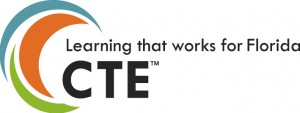Earlier this week, the National Association of State Directors of Career Technical Education Consortium (NASDCTEc) held its annual Spring Meeting, where the notion of ‘career readiness’ was front and center. One session squarely focused on the work of the Career Readiness Partnership Council (CRPC) in convening a broad group of partners to develop a common definition of Career Readiness (which can be found at www.careerreadynow.org) and potential next steps for the partnership and the definition itself.
The urgency behind the CRPC and the development of a common understanding of what career readiness was driven by a number of factors, and Patrick Ainsworth, who coordinated much of the work of the CRPC pointed out a few: the ongoing development of the Common Core Technical Core, the widespread adoption of the college- and career-ready Common Core State Standards (which cover only the academic foundation of career readiness), and the lack of understanding of what career readiness means and looks like across the nation. The CRPC, therefore, aimed to create a “north star†for each of the participating organizations around career readiness to help guide and drive policy and practice.
The other two panelists, representing partnership organizations, each discussed what compelled them to join the CRPC and what the definition will mean for them moving ahead. Martin Simon of the National Governors’ Association described how governors are concerned not only about the skills gap but also the coordination gap between educators and workforce investment boards. He discussed the need for a more comprehensive system to better link education, training and workforce needs that will build career pathways, not just training for jobs. About half of all governors discussed career pathways or Career and Technical Education (CTE) in their 2013 state of the state addresses, demonstrating they not only care about these issues but consider them to be priorities.
Andrew Moore from the National League of Cities described the unique role mayors can play in connecting and convening the education and business communities. Mayors are deeply concerned about the skills gap and the extremely high unemployment rates among teenagers.
After the panelists’ remarks, the participants were asked how they might use the career readiness definition moving forward. Some responses included:
- Identify ways to apply the definition to key audiences, included, but not limited to: policymakers, business and industry, high school educators, higher education, parents, students, and community-based organizations and service providers.
- Formalize the definition and identify how it can be embedded in state policy.
- Engage governors to embrace the definition as a framework for coordinating CTE, workforce development and economic development initiatives.
- Embed the definition in Carl D. Perkins Career and Technical Education Act reauthorization.
- Provide the definition as a model for districts to use in whole or as a starting point when developing their own definitions of career readiness.
Kate Blosveren, Associate Executive Director






